84 F. high in the Twin Cities yesterday.
83 F. average high on July 28.
77 F. high on July 28, 2014.
1.29" rain fell at MSP International Airport Tuesday.
July 29, 1917: Hottest temperature ever recorded in Minnesota with 114.5 degrees at Beardsley.
July 29, 1849:
Severe storms between 3 and 5 AM at the newly constructed post of Ft.
Ripley. W.J. Frazier, Head Surgeon noted: "Rain and hail with much
thunder and lightning and very high winds breaking many trees."
No ComplaintsWe've
gotten off easy this summer with heat and humidity - compared to much
of the northern hemisphere we've gotten a free ride. Rome and Madrid
have been broiling above 100F; record heat as far north as the
Netherlands, with rare tornadoes skipping across Norway and Sweden.
My
Aunt Sigrid is a psychologist in Karlsruhe, Germany. The only A/C is in
her car; she's been cooling off by driving a few hours every day with
the A/C blasting cold air. Most Europeans don't have air conditioning in
their homes, in fact many of them wonder why Americans keep their homes
as cold as meat lockers.
Hey, if it wasn't for A/C Florida would still be swampland - Arizona might still belong to Mexico. Just saying.
Tuesday
morning's 1 to 2 inch downpour came at the right time for corn
tassling; another epic harvest is shaping up for 2015. Much of the corn
belt is in unusually good shape; drought-free, no flooding or hail,
which (ironically) is depressing prices. Can the weather be "too nice"?
Expect a fresh breeze today; comfortable 80s into the weekend with the
next chance of a renegade thunder clap
Saturday night.
No extreme heat is brewing, just a handful of almost-perfect, drama-free days.
Photo credit above: "
A
man refreshes himself at the fountain called "Barcaccia", made by
Pietro Bernini and his son Gian Lorenzo in 1627, at the Spanish steps,
in Rome, Thursday, July 16, 2015. Europe's heat wave has pushed the
mercury to levels as high as 40 degrees Celsius (104 degrees Fahrenheit)." (AP Photo/Andrew Medichini)
"One Of The Top 3 El Nino Events Of The Last 60 Years?" That headline comes from Dr. Jeff Masters at Weather Underground, who has an
excellent update
on what may be a memorable warm phase for the Pacific, and a possible
dent in the epic drought gripping California and much of the west.
Here's an excerpt: "
We’re now well into the ramp-up phase of what
promises to be one of the top three El Niño events of the last 60-plus
years. Sea-surface temperatures (SSTs) in the Niño3.4 region--an
area straddling the eastern tropical Pacific--are the most widely
accepted index for the oceanic evolution of El Niño. NOAA announced in
its weekly ENSO update on Monday (see PDF)
that Niño3.4 SSTs were running 1.6°C degrees above the seasonal average
for the week ending Monday. While this is down slightly from a peak of
1.7°C the week before, Michelle L’Heureux reminds us in NOAA’s ENSO Blog that minor weekly variations aren’t worth getting too worked up about..."
Image credit above: "
Sea
surface temperatures for the week ending July 22 were more than 1°C
above average from the eastern tropical Pacific northward through much
of the northeast Pacific, with pockets of 2 - 4°C above average evident
near the equator. Image credit: NOAA National Centers for Environmental Information."
Weather El Nino's Financial Storm.
What will a rapidly warming Pacific mean for Minnesota and the rest of
the USA? If the past is any guide more storms from California into the
southern USA, and a mild bias into much of the winter from the Pacific
Northwest and western Canada into the Upper Midwest. In theory - but
every El Nino is different. Here's an excerpt from
Yahoo News: "...
The
latest El Niño is slated by some observers to rival the one in 1997–98
as the biggest ever — one that killed an estimated 2,100 globally with a
force roughly equivalent to 1 million Hiroshima bombs. It left $33
billion in property damages in its wake. “This could be a big one,”
warns a recent report from Brown Brothers Harriman, a financial firm.But
predicting exactly what the weather will be is obviously tricky, and El Niño’s impact on the markets is usually quite specific..."
Worldwide Strengthening El Nino Giveth and Taketh Away.
My favorite recent headline (it isn't often you see taketh in print
these days). El Nino may be a blessing for California within a few
months, but for central America: not so much. Here's a snippet of a
story at AP: "...Around
the world, crops fail in some places, thrive elsewhere. Commercial
fishing shifts. More people die of flooding, fewer from freezing.
Americans spend less on winter heating. The global economy shifts. "El
Nino is not the end of the world so you don't have to hide under the
bed. The reality is that in the U.S. an El Nino can be a good thing,"
said Mike Halpert, deputy director of the U.S. National Oceanic and
Atmospheric Administration's Climate Prediction Center. This El Nino
officially started in March and keeps getting stronger. If current
trends continue, it should officially be termed a strong El Nino early
in August, peak sometime near the end of year and peter out sometime
next spring. Meteorologists say it looks like the biggest such event
since the fierce El Nino of 1997-1998..."
Image credit above: "
Maps
of sea surface temperature anomaly in the Pacific Ocean during a strong
El Niño (bottom, December 1997). Maps by NOAA Climate.gov, based on
data provided by NOAA View"
Freezing Offices Result in Freezing Women, Oblivious Men. Easy with the A/C, according to a story at
The Kansas City Star; here's an excerpt: "...
Frozen
workers make more errors and are less productive, according to Alan
Hedge, professor of design and environmental analysis and director of
Cornell’s Human Factors and Ergonomics Laboratory, who studied office
temperatures about a decade ago. Researchers had their hands on the
controls at an insurance office for a month. And when they warmed the
place from 68 to 77 degrees, typos went down by 44 percent and
productivity went up by 150 percent..."
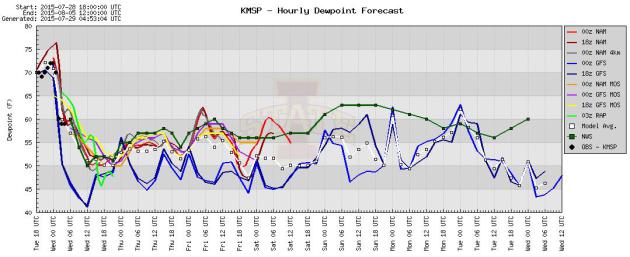 Comfortable Front
Comfortable Front.
All the various models show dew points dropping into the 50s today, a
breath of fresh, Canadian air. Dew points rise above 60F by the weekend,
humid, but not unbearable. Source: Iowa State.
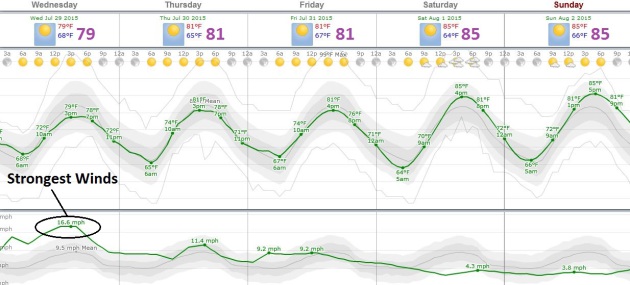 Dry Spell
Dry Spell.
European guidance may be running a couple degrees too cool, but I think
it has the right idea with precipitation, or rather a lack of puddles
into the weekend; temperatures fairly close to average for late July.
Today will be the windiest day in sight with a few gusts over 25 mph,
but winds slacken off as the week goes on. Source: Weatherspark.
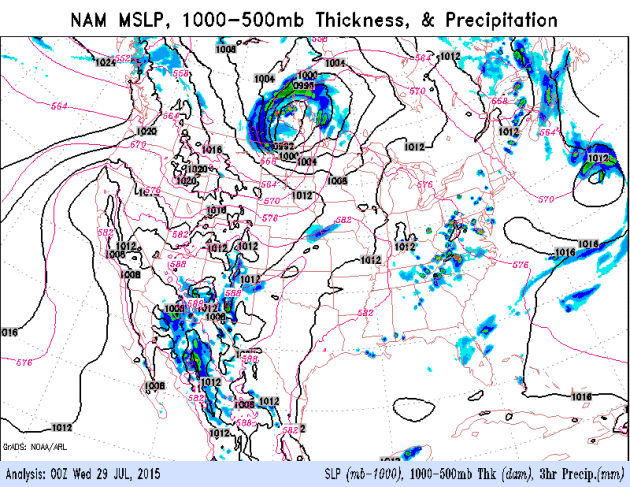 Florida Soaking - Relatively Quiet for Minnesota
Florida Soaking - Relatively Quiet for Minnesota.
You can see the powerful (unusual) storm that whipped up 60 mph winds
over Montana and North Dakota yesterday, a tight pressure gradient
pulling cooler, drier air into Minnesota today, in fact it should feel
downright comfortable out there. Florida may wind up with some 5-7"
rainfall amounts by the end of the week; a low probability of a tropical
disturbance forming from this system in the days to come. 84-hour NAM
guidance: NOAA.
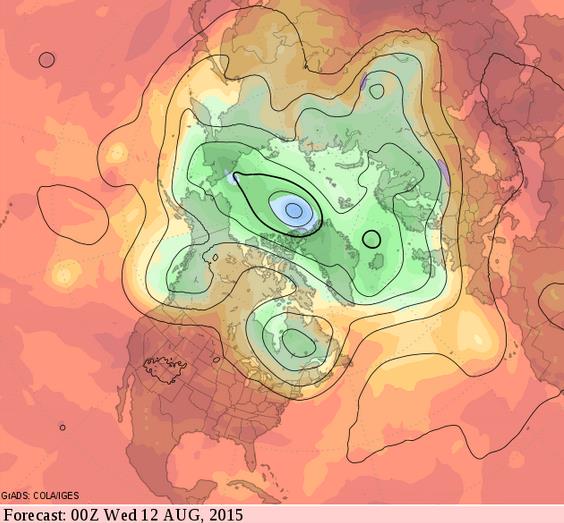 Sizzling Air Stays South.
Sizzling Air Stays South.
Enough cool air is forecast to drain southward out of Canada to take
the edge off any hot fronts from the Dakotas and Minnesota into the
Great Lakes and New England, while the rest of the USA continues to fry.
Moderately warm, temperatures close to average for Minnesota, but no
beastly-heat in sight. Source: GrADS:COLA/IGES.
Read more here: http://www.kansascity.com/living/article28609519.html#storylink=cpy
Manitoba Tornado Lasted Incredible 2.5 to 3 Hours: Environment Canada.
This may have been multiple tornadoes dropping out of the same
supercell. If it's really one tornado for nearly 3 hours that would be
remarkable, almost historic.
Globalnews.ca has the story; here's the intro: "
A
large tornado that developed in southwestern Manitoba at 8:30 p.m.
Monday stayed on the ground for an “incredible” 2.5 to 3 hours, an
Environment Canada weather statement says. The large tornado developed
just north of Pierson, Man., at 8:30 p.m. CT and tracked 80 kilometres
north, with the last report of it coming from north of Virden, Man., at
around 11 p.m..."
Dominator 3 Intercepts Monster Tornado in Canada. Here is more background (and remarkable video) of Reed Timmer's intercept at
AccuWeather:
"Reed Timmer and his team chased this massive tornado in southwestern
Manitoba, Canada, on July 27. The tornado ripped up pavement and tossed
debris with winds measuring 122 mph."
* The Weather Channel has more video of the Manitoba, Canada tornado intercept
here.
Alaska's 2015 Wildfire Season May Be The Worst on Record. Here's an excerpt and caption from a pictorial review at
The Washington Post: "
Almost 5 million acres have burned, and scientists say the blazes are the latest sign of a region transformed.
Woods burned by the Aggie Creek Fire, about 30 miles northwest of
Fairbanks, Alaska, and a portion of the Trans-Alaska Pipeline System are
visible from a highway." Marc Lester/For The Washington Post.
Record Heat Grips Much of Europe. Here's a snippet of an update from
The Guardian: "...
For
now the extreme heat has returned to its more normal habitat, confining
itself to north Africa and southern parts of the Mediterranean but over
the past weeks long standing temperature records have been tumbling
across Europe. Germany’s all-time highest temperature record was broken
on 5 July with 40.3C in Bavaria, and in the Netherlands, Maastricht set a
new national record for July of 38.2C. Spain set new record
temperatures for both May and June, and this month Geneva recorded the
highest ever temperature in Switzerland north of the Alps, with 39.7C..."
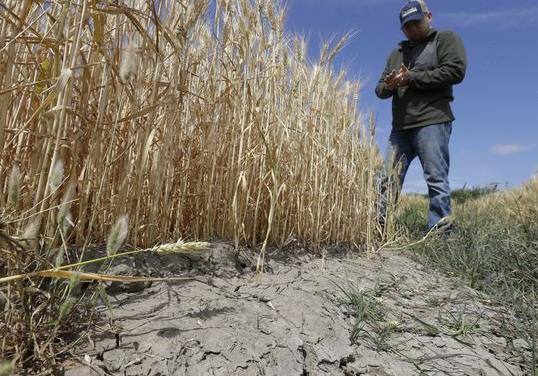 On Four Continents, Historic Drought Wreaks Havoc
On Four Continents, Historic Drought Wreaks Havoc.
USA TODAY reports; here's the intro: "
California's
historic drought appears to be matched by severe dry spells on three
other continents. Brazil, North Korea and South Africa are bearing the
brunt of much lower-than-average precipitation, wreaking havoc on
millions of peoples' lives and livelihoods. While the causes vary from
country to country, the chance of more intense droughts in the future as
a result of man-made climate change is only increasing as regional
extremes of precipitation — both more and less — remain likely,
according to the U.N.'s Intergovernmental Panel on Climate Change..."
Photo credit above: "
Gino
Celli, who relies on senior water rights to water his crops, inspects a
wheat field nearing harvest on his farm near Stockton, Calif., on May
18, 2015."
(Photo: Rich Pedroncelli, AP).
Rain, Storm Surge Combine To Put U.S. Coasts at Risk. Climate Central
takes a look at how two different forms of flooding can combine to
create a much more dangerous scenario, one that appears to be popping up
with greater frequency along the U.S. coastline. Here's an excerpt:
"...
He and his colleagues combed through historical data to see if
there was a relationship between heavy precipitation events and storm
surge for locations all along the coasts. They found substantial
portions of the Gulf and Atlantic coasts where the two factors were
linked, and also found that compound flooding events were happening more
often now than in the past at many locations. The main idea of the
study, detailed July 27 in Nature Climate Change,
was to “raise awareness that those kinds of events exist” and are
dangerous, Wahl said. So far, “we have pretty much ignored them...”
Image credit above: "
This
schematic shows how the coincident occurrence of precipitation and
storm surge (large enough to cause direct flooding or to slow down or
fully block freshwater drainage) can lead to compound flooding in
coastal regions." Credit: Theodore Scontras/University of Maine.
U.S. Flood Risk Could Be Worse Than We Thought.
A tropical system, even a powerful coastal storm can do just that,
increase the surge from the sea while increasing inland flooding from
excessive rainfall amounts in a short period of time. Here's a clip from
a story at TIME: "...In
the past, disaster experts have used analyzed storm surges and high
rainfall separately to define flood zones and devise preparedness plans.
The study,
published in the journal Nature Climate Change, shows that this method
underestimates the risk of storm surges and high rainfall occurring at
the same time. The number of these so-called compound events has
increased over the past 100 years, researchers found..."
This $15,000 Drone Could Save You From a Hurricane. Here's a clip from an interesting explainer at PalmBeachPost.com: "...There’s
a drone for just about everything these days from delivering pizzas to
going to war, but a new unmanned aerial vehicle may save your life from a
looming hurricane. The 13-pound Coyote drone developed by researchers
at the National Oceanic and Atmospheric Administration will fly into
parts of a tropical cyclone that no manned aircraft would dare go.
Skimming the surface of the ocean, the drone will collect data on sea
temperature and air pressure in an area of the storm that has largely
been invisible to forecasters in the past..."
Photo credit above: "
Paul Reasor, a NOAA hurricane researcher, holds Coyote drone in this 2014 photo." Courtesy: NOAA.
Earth Could Get Just 12 Hours' Warning of a Damaging Solar Storm.
Here's a cheery thought - we've been lucky, to date, at least in recent
years. At some point, statistically, our luck runs out. Here's an
excerpt from
The Guardian: "
Humanity would only have a 12-hour warning about the arrival of a “coronal mass ejection” that could damage the National Grid,
pipelines and railway signals, according to a newly released document
from the UK Cabinet Office. In a report worthy of a Bruce Willis film,
the Department for Business, Innovation and Skills (BIS) has set out the
nature of the risk to the UK from “severe space weather”, which it says
results from various types of solar activity..."
Image credit above: "
NASA captured this image of a solar flare in 2014. The strongest recorded incident of coronal mass ejection dates back to 1859." Photograph: Rex/Nasa
Stagnant Summer Days On The Rise in U.S. Not as big a deal in Minnesota and the northern tier states, as
Climate Central reports; here's an excerpt: "...
Climate
Central looked at how the number of summer “stagnation days” for cities
across the U.S. had changed since 1973 using the National Centers for
Environmental Information’s Air Stagnation Index.
The ASI uses a combination of upper air wind, surface wind and
precipitation data to determine days when conditions are ripe for
pollutants to build up in the air. The analysis found that stagnation
days had increased across much of the country, most noticeably in the
Southwest and Southeast..."
Elon Musk And Stephen Hawking Among Hundreds to Urge Ban on Military Robots. Here's the intro to a
New York Times story: "
Elon Musk and Stephen Hawking,
along with hundreds of artificial intelligence researchers and experts,
are calling for a worldwide ban on so-called autonomous weapons,
warning that they could set off a revolution in weaponry comparable to
gunpowder and nuclear arms. In a letter
unveiled as researchers gathered at the International Joint Conference
on Artificial Intelligence in Buenos Aires on Monday, the signatories
argued that the deployment of robots capable of killing while untethered
to human operators is “feasible within years, not decades...”
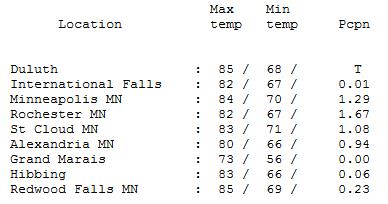
TODAY: Partly sunny, windy. Dew point: 54. Winds: W 20+ High: 82
WEDNESDAY NIGHT: Clear and comfortable. Low: 62
THURSDAY: Bright sun, fresh breeze. Winds: NW 15. High: 83
FRIDAY: Warm sunshine, less wind. Wake-up: 66. High: 86
SATURDAY: Sticky sun, T-storm late? Wake-up: 67. High: 87
SUNDAY: Plenty of warm sunshine. Wake-up: 66. High: 84
MONDAY: More clouds, cooler. Few showers. Wake-up: 64. High: 77
TUESDAY: Sunny and relatively comfortable. Wake-up: 59. high: 79
Climate Stories....
Alaska's Terrifying Wildfire Season And What It Says About Climate Change. Here's a snippet from a Chris Mooney story at
The Washington Post: "...
The
staggering 2015 Alaska wildfire season may soon be the state’s worst
ever, with almost 5 million acres already burned — an area larger than
Connecticut. The pace of the burn has moderated in the last week, but
scientists say the fires are just the latest indicator of a climatic
transformation that is remaking this state — its forests, its coasts,
its glaciers, and perhaps most of all, the frozen ground beneath — more
than any other in America..."
Photo credit above: Washington Post photo by Marc Lester.
Disastrous Sea Level Rise Is An Issue For Today's Public - Not Next Millenimum's. Dr. James Hansen has an Op-Ed at
Huffington Post regarding his new and controversial paper. Here's an excerpt: "...
Our
simulations were aimed to test my suspicion that ice sheet
disintegration is a very nonlinear phenomena and that the IPCC studies
were largely omitting what may be the most important forcing of the
ocean: the effect of cold freshwater from melting ice. Rather than use
an ice sheet model to estimate rates of freshwater release, we use
observations for the present ice melt rate and specify several
alternative rates of increase of ice melt. Our atmosphere-ocean model
shows that the freshwater spurs amplifying feedbacks that would
accelerate ice shelf and ice sheet mass loss, thus providing support for
our assumption of a nonlinear ice sheet response..."
James Hansen Spells Out Climate Danger Of The "Hyper-Anthropocene" Age. Here's more perspective on the new paper at
ThinkProgress: "Hansen and co-authors deftly dismiss those ill-informed Pollyannas who use Orwellian terms like “
good Anthropocene.”
They explain that we are far past “the era in which humans have
contributed to global climate change,” which probably began a thousand
years ago, and are now in “a fundamentally different phase, a
Hyper-Anthropocene … initiated by explosive 20th century growth of
fossil fuel use.” The “Hyper-Anthropocene” is a very good term to
describe the unprecedented acceleration in global warming that humanity
has set in motion with the explosive growth of fossil fuels and carbon
pollution, as the recent science makes clear.."
Graphic credit above: "
Temperature change over past 11,300 years (in blue, via Science, 2013) plus projected warming this century on humanity’s current emissions path (in red, via recent literature)."
Atlantis Awaits: Melting Ice and Rising Water for Coastal Cities.
Alarmist hype? I sure hope so, but so far Dr. Hansen's predictions have
been pretty much on target. Here's an excerpt of an Op-Ed at
The Baltimore Sun: "...
But
despite their many blessings, the Earth's oceans are becoming a curse.
By burning fossil fuel, we have already begun to unleash the vast
quantities of water locked up in glaciers as ice. That melt has already
begun raising sea levels, which are, as revealed by our most recent research,
preparing for an invasion of our coastal communities the likes of which
modern humans have never encountered. To say that we're not ready for
this oceanic assault would be an understatement. Our international goal
for limiting warming won't be enough to hold the waters back. Even if we
meet the target goal of limiting global warming to 2 degrees Celsius,
we will have already released enough CO2 to drive a dangerous amount of
melting. Without concerted efforts to tackle climate change, we are
condemning our biggest, most prosperous and populated cities to an
underwater existence..."
Image credit:
flewdesigns.
Florida Leads Nation in Property At Risk from Climate Change. South Florida is ground zero. Here's an excerpt from
The Miami Herald:
"...Florida has more private property at risk from flooding linked to
climate change than any other state, an amount that could double in the
next four decades, according to a new report by the Risky Business
Project. By 2030, $69 billion in coastal property in Florida could flood
at high tide that is not at risk today, the report found. That amount
is projected to climb to $152 billion by 2050..."
Photo credit above: "
Under
climate change projections, rising sea levels could make storm surge
during hurricanes worse. A new study projects the amount of private
property on Florida coasts that floods at high tide could climate by $69
billion by 2030." Marsha Halper - Miami Herald Staff.
Texas Facing Major Climate Change Impacts. More fall-out from the latest "Risky Business" report, highlighted at the Texas Tribune; here's the intro: "
Texas
probably will see a sharp increase in heat-related deaths and coastal
storm-related losses in the coming decades if nothing is done to
mitigate a changing climate, according to a new study commissioned by a
bipartisan group of prominent policymakers and company executives aiming
to spawn concern – and action – in the business community over the
much-debated warming trend..."
* The "Risky Business" report for the southeastern USA and Texas is
here.
Read more here: http://www.miamiherald.com/news/local/environment/article29029159.html#storylink=cpy
Quest For Climate-Proof Farms. How do we build more resilience into agriculture?
Nature has an interesting story - here's an excerpt: "...
Martin
Schönhart, an agro-economist at the University of Natural Resources and
Life Sciences in Vienna, presented preliminary forecasts for average
agricultural yields in 2040. Some crops and fruit benefited from the
amount of warming expected. But the yields of other crops — including
maize — decreased by up to 20% because changes in precipitation and
extreme weather events wiped out the benefits brought by warmer
temperatures..."
Fossil Fuel Companies Impose More in Climate Costs Than They Make in Profits. Dave Roberts at
Vox has an interesting perspective; here's an excerpt: "...
People
sometimes refer to the unpaid cost of carbon pollution as a subsidy, or
an "implicit subsidy," to polluting businesses. The IMF recently issued
a report
saying that total worldwide subsidies to energy, mainly fossil fuel
energy, amounted to $5.2 trillion a year. The reason that number is so
high is that the IMF includes implicit subsidies — the social costs
imposed by businesses (including climate damages) that they don't have
to pay for. Vox's Brad Plumer raised some questions
about whether that's a misleading use of the term "subsidy." Whatever
you call it, though, it makes for an unsustainable situation, literally.
It can't go on..."
 Some In Christian Right Embracing Environmental Causes.
Some In Christian Right Embracing Environmental Causes. It's a trend, not a fad. Here's an excerpt from
Standard Examiner: "...
Christian
belief and the environmental movement can work hand-in-hand, some faith
communities say, but first believers need to separate out the politics.
When it comes to climate change and natural resource protections, local
political dialogue has grown more at odds with Christian belief in
being “responsible stewards.” That rhetoric often strikes a chord with a
small but growing minority within the Christian right, and some
religious leaders are speaking out..."
AP file photo credit: "
A
May 28, 2013 file photo shows a hiker taking a photo on a rock
formation known as The Wave in the Vermillion Cliffs National Monument
in Arizona."
Cornering The Deniers on Climate Change. Here's a snippet of an Op-Ed at New Jersey's
Star-Ledger: "...
A 2013 study found that many species will have to evolve 10,000 times faster
than they have in the past to keep up with the Earth's current pace of
warming. So let this be a warning: if we don't slow this dangerous
trend, we could all end up like the woolly mammoth. The climate deniers
are gradually being cornered. It's sad that it took this long, and we
didn't heed the scientific advice to curb global carbon emissions
decades ago. But the hard evidence continues to pile up. It should light
a fire under the debate leading up to December's Paris conference on
climate change. So should the Pope's call for climate action..."
Heed Pope Francis' Moral Clarity on Climate Change. Here's a clip from a
recent Op-Ed by the Star Tribune's Editorial Board: "...
The
“we” were mostly mayors whose cities can lead. “Cities are the most
important place to go for solutions around climate change because cities
are also places that have factors that most significantly contribute to
climate challenges, but also are a source of innovation to respond to
those challenges as well,” Hodges said. The Vatican’s message, with its
moral clarity and acknowledgment of accepted science, is a galvanizing
event. Yet U.S. policy changes happen through the political process,
meaning that for real progress more Republicans will need to heed the
conservative principle that the planet must be protected..." (File photo: AP).
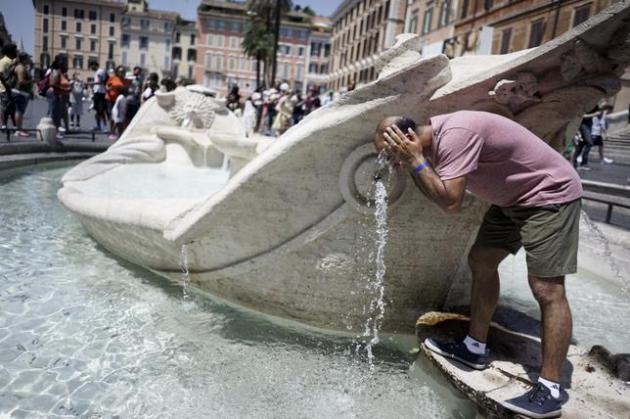
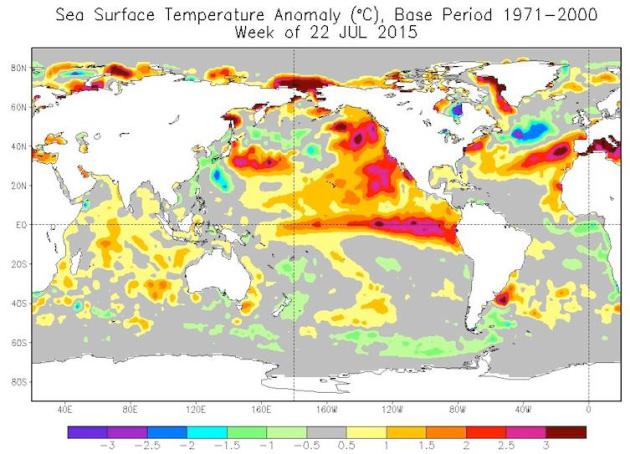

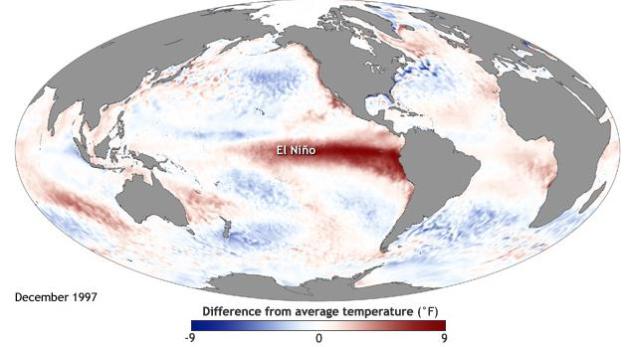





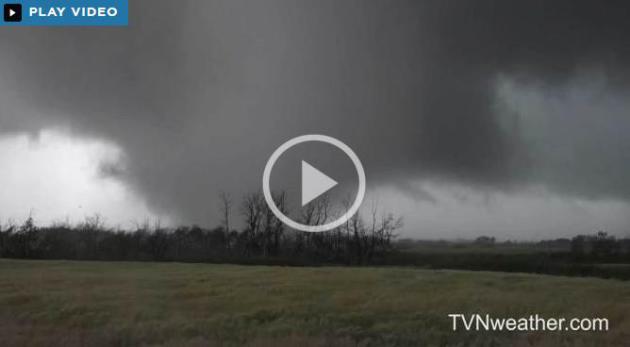
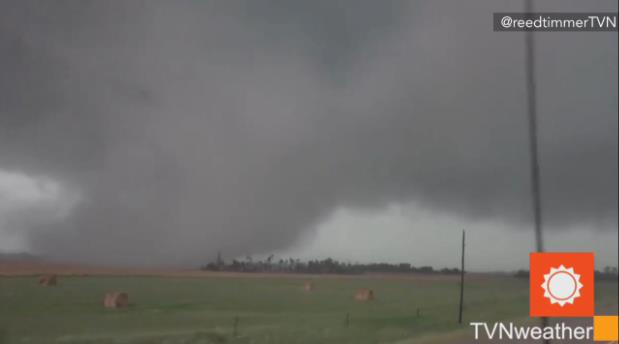
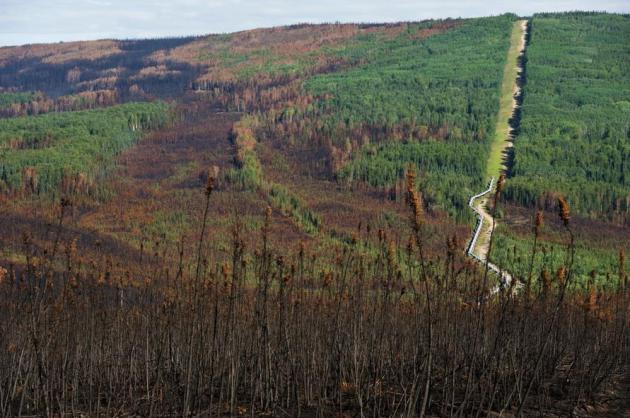


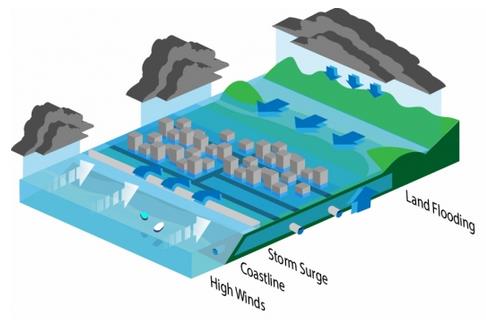
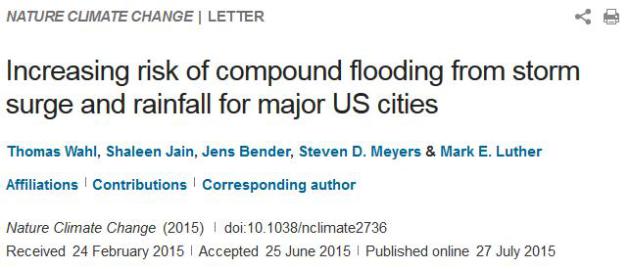

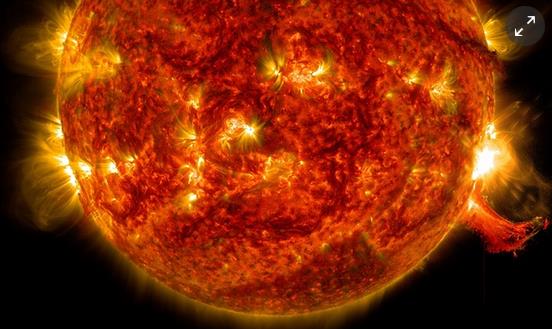
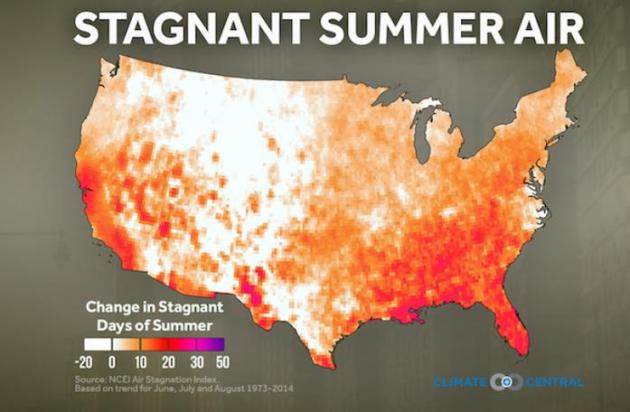



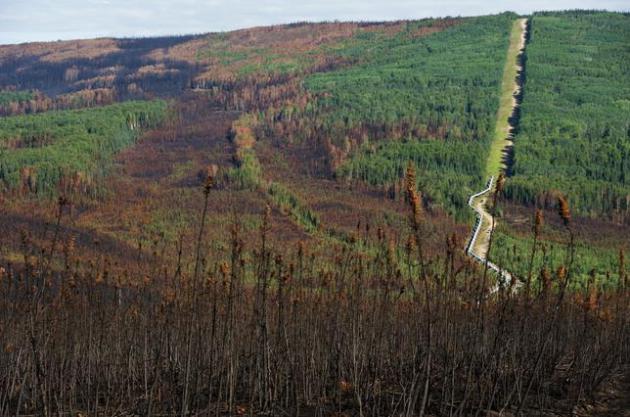
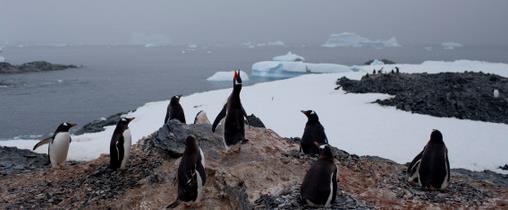
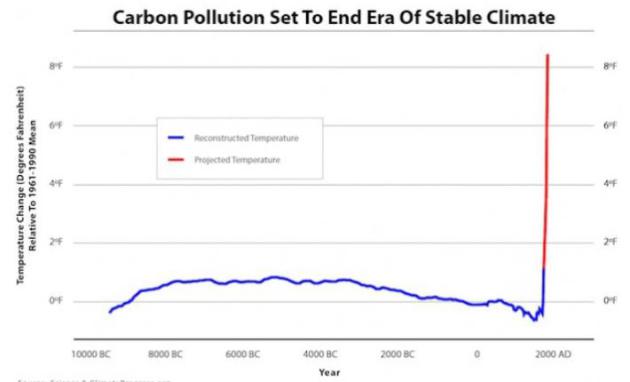

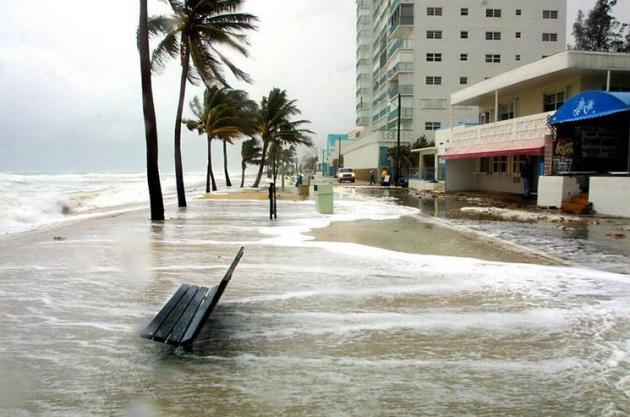


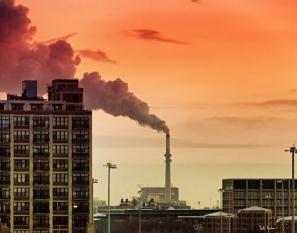



No comments:
Post a Comment